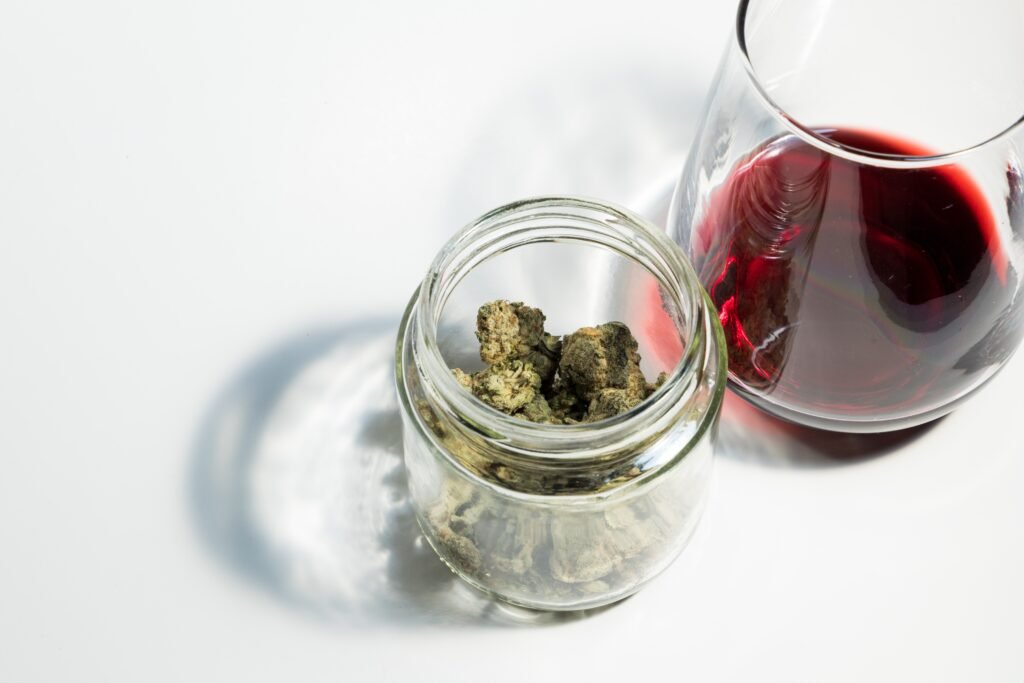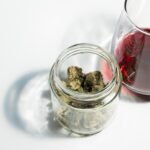Ah, dear oenophiles, picture this: You’re swirling a glass of rosé, inhaling notes of strawberry and citrus, when suddenly, a gentle wave of relaxation washes over you—not just from the alcohol, but from a sly infusion of cannabis. No, this isn’t the plot of a sommelier’s fever dream; it’s the burgeoning world of cannabis-infused wine, or “cannawine,” where the vine meets the herb in a match made in hedonistic heaven. As we sip our way through 2025, this hybrid elixir is shaking up the beverage scene, blending the sophistication of fine wine with the chill vibes of cannabis. For those of us who appreciate a good terroir tale with a twist, cannawine promises to elevate your tasting notes—literally. Let’s uncork this trend and explore why it’s becoming the toast of forward-thinking wine lovers.
From Grape Expectations to High Hopes: A Brief History
Cannabis-infused beverages aren’t exactly new—ancient civilizations were steeping herbs in everything from mead to medicinal tonics long before the term “sommelier” entered the lexicon. But the modern cannawine movement kicked off in earnest around the 2010s, fueled by cannabis legalization waves in places like California. Early experiments were, shall we say, a bit skunky: Think homemade infusions that tasted more like a backyard compost heap than a Bordeaux. Fast-forward to today, and thanks to tech-savvy producers, we’re in a golden (or should I say, green?) age. With cannabis markets maturing—pun intended—these wines are now crafted with the precision of a Napa Valley vintage, minus the hangover and plus a potential entourage effect for that extra layer of bliss.
The catalyst? Shifting consumer palates. Wine consumption might be dipping slightly in the U.S. (down about 2% in 2023, with tariffs looming as a 2025 buzzkill), but cannawine is riding high on the wellness wave. Health-conscious sippers, especially Millennials and Gen Z, are ditching boozy nights for balanced buzzes, driving demand for low- or no-alcohol options infused with THC or CBD. It’s like upgrading from a house red to a reserve—same ritual, elevated experience.
The Art of Infusion: How Cannawine is Crafted
Creating cannawine isn’t as simple as tossing a joint into your fermentation tank (though, admit it, that’s a hilarious visual). Most producers start with a base wine—often dealcoholized to skirt regulations that frown on mixing booze and buds—then infuse it with cannabis extracts. The magic lies in nanoemulsion technology, which breaks down THC or CBD into tiny, water-soluble particles. This ensures even distribution, quick onset (effects in 15-20 minutes), and a clean taste that doesn’t scream “dank.”
Take THC-infused varieties: These pack the psychoactive punch, typically dosed at 5-10mg per serving for a social, controllable high. CBD options, on the other hand, focus on calm without the lift, appealing to those seeking anti-anxiety sips sans the giggles. Hemp-derived products (with under 0.3% THC) play it safe under the 2018 Farm Bill, while full-spectrum marijuana infusions thrive in legal states. Flavors? Expect classics like Sauvignon Blanc or sparkling rosé, zhuzhed up with terpenes—those aromatic cannabis compounds—that mimic or enhance wine’s own bouquet. One brand’s Sauvignon might echo citrus and herbs, while another’s Pinot Noir hints at earthy berries with a subtle myrcene mellow.
The result? Wines that retain their food-pairing prowess—think a CBD Chardonnay with seafood or a THC red with charcuterie—while adding therapeutic twists. It’s viticulture meets pharmacology, and the connoisseur in you will appreciate the nuance.
Market Buzz: Growth, Brands, and the Green Rush
If numbers could get tipsy, the cannawine market would be three sheets to the wind. The global cannabis-based wine sector is projected to balloon from around $11.4 million in 2023 to $90.73 million by 2031, boasting a heady CAGR of 29.6%. Narrowing to CBD wine, we’re looking at $54.8 million in 2025 soaring to $371.7 million by 2035 at 21.1% CAGR. Another estimate pegs CBD wine at $150 million in 2024, eyeing $500 million by 2033. North America leads, with California as the epicenter, but expect ripples into Europe and beyond as regulations loosen.
Standout brands are popping corks left and right. House of Saka, for instance, offers elegant, alcohol-free sparklers like their Pink (a rosé-inspired blend with 5mg THC per glass), emphasizing luxury and zero calories for the discerning palate. Rebel Coast counters with bold, THC-infused whites and reds, using nano-tech for fast-acting fun— their Sauvignon Blanc is a crisp crowd-pleaser that pairs THC’s uplift with zesty acidity. Emerging players like E-40’s ON1 Infusion Wine bring fruit-forward Moscatos to the table, though they’re more alcohol-infused with hints of crossover appeal. Even big names are dipping toes: Cannabis giant Cookies is eyeing alcohol ventures, while Trulieve launches grape-flavored rosin edibles that nod to wine vibes.
Social media’s abuzz too—X users rave about THC drinks outselling shelves at Total Wine, with one noting they comprise 20% of stock in some spots. Pabst Blue Ribbon’s cannabis seltzer? Light, not-too-sweet, and a gateway for wine-curious canna-fans. It’s clear: Cannawine isn’t just a fad; it’s reshaping how we unwind.
Navigating the Legal Vine: Challenges and Charms
Of course, no great vintage comes without its vintage headaches. Regulations are a patchwork quilt—THC wines are state-locked in the U.S. (legal in 24 recreational states as of 2025), unable to cross borders due to federal Schedule I status. Hemp-based CBD options fare better, slipping into mainstream retail like Total Wine, but varying state laws keep things prickly. Production costs are steep (dealcoholizing plus emulsions), leading to premium pricing—$50-80 a bottle isn’t uncommon, which might make budget sippers balk.
Yet, the charms outweigh the corkage fees. Fans tout fewer calories, no hangovers, and wellness perks like stress relief or better sleep. Pairings get playful: A THC Sauvignon with spicy Thai food amplifies flavors via terpenes, while CBD reds soothe after a long day. Challenges like inconsistent dosing or lingering stigma persist, but education and innovation are smoothing the edges. As one X poster quipped about a “Drunk Driver” strain (a cannabis hybrid evoking wine notes), it’s all about that euphoric lift without the crash.
Toasting the Future: A High Note to End On
As we raise our glasses to cannawine’s ascent, it’s evident this trend is no fleeting buzz—it’s a sophisticated evolution for the wine world. With markets projecting explosive growth and brands innovating at breakneck speed, 2025 might just be the vintage that cements cannawine as a staple for adventurous palates. Whether you’re a die-hard Burgundy buff curious about CBD or a cannabis connoisseur craving vinous vibes, these blends offer a delightful detour from the ordinary. So, next time you’re perusing winery-search.com, seek out these hybrid heroes. After all, in the words of a wise wino: Why settle for just fermented grapes when you can have a grape escape? Cheers to that—and remember, sip responsibly, elevate mindfully.







Leave a Reply